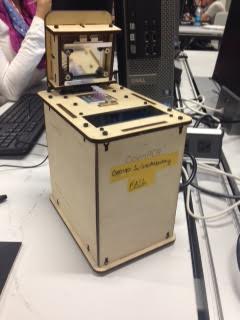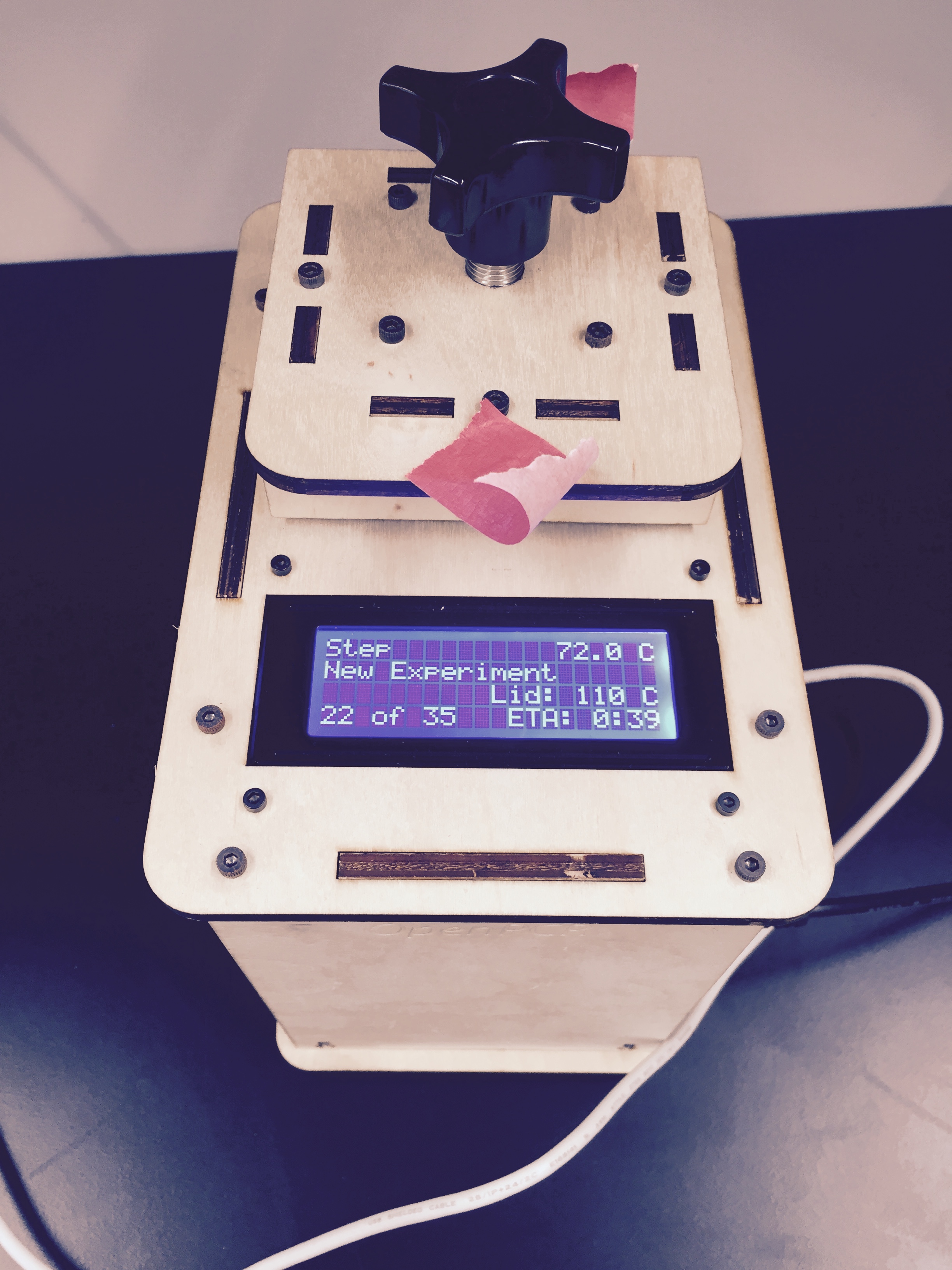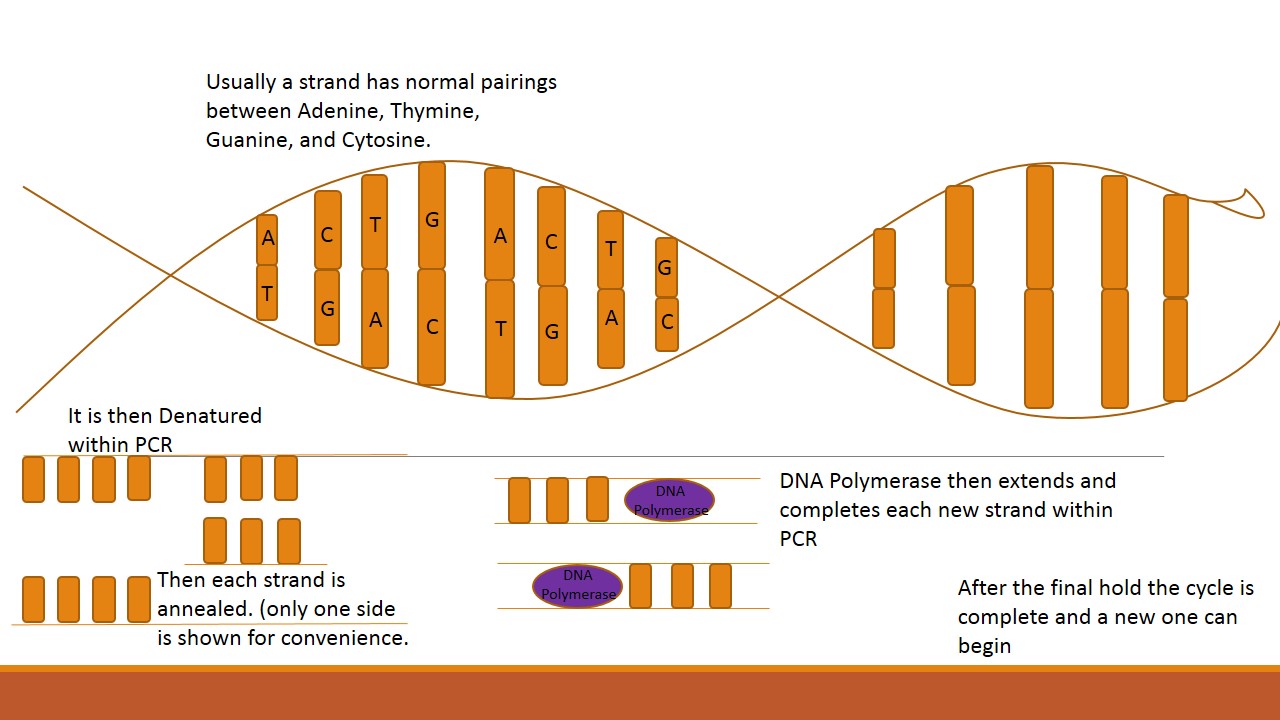BME100 s2014:W Group1 L4
| Home People Lab Write-Up 1 | Lab Write-Up 2 | Lab Write-Up 3 Lab Write-Up 4 | Lab Write-Up 5 | Lab Write-Up 6 Course Logistics For Instructors Photos Wiki Editing Help | |||||||||
|
OUR TEAMLAB 1 WRITE-UPInitial Machine TestingThe Original Design Open PCR is machine that is designed to amplify a specific strand of DNA through polymerase chain reaction. In order to fulfill its objective, a sample of DNA undergoes specific temperature cycles. Varying the temperature from 4ºC up to 95ºC allows the double stranded DNA to divide itself into two single strands. After DNA is denatured, the machine is cooled so that the primers can bind to the desired location in the single strand of DNA, and so that the enzyme, taq polymerase, can create the complementary strand of each single strand. This process may be repeated as long as there are free nucleotides. As a result, DNA is duplicated and new double stranded DNA sections are formed. Fig. 1 Outside structure of Open PCR Machine Fig. 2 Inside components of Open PCR machine Experimenting With the Connections When we unplugged (part 3) from (part 6) the display was disconnected from the machine and therefore went black. When we unplugged the white wire that connects (part 6) to (part 2), the temperature reading displayed a default temperature. The white wire transmits the heat pad data to the rest of the machine. Without this, the temperature readings are not accurate. Test Run This machine was first tested on March 19, 2014. The machine remained at cycle one for an hour because it was unable to cool down to 57 degrees which is last step. It was noticed that the fan is not working properly. It was concluded that the Open PCR did not work.
ProtocolsThermal Cycler Program 1. Initial Step (Initial Denaturation) Single cycle of three minutes at 95ºC. 2. Middle Step 35 cycles consisting of:
3. Final Step- Single cycle of three minutes at 72ºC the final extension occurs. 4. Final Holding- Refrigeration at 4ºC, indicating that CPR reaction has ended.
DNA Sample Set-up
The PCR reaction mix contains -Template DNA- Strand of DNA that provides the desired smaller string of nucleotide -Primers- Primers provide a start point for the desired strand of nucleotide and provide a binding point for Taq -Taq Polymerase- taq polymerase is a protein that binds to the DNA and helps to add nucleotide to the single of DNA -Deoxyribonucleotides- The deoxyribonucleotides (bind to the Mg 2+ions) reduce the activity of the enzyme DNA/ primer mix
-The patient's DNA -Forward Primer -Reverse Primer
Research and DevelopmentPCR - The Underlying Technology
In the PCR reaction, there are four main component that are combined to replicate specific genes, or segments of DNA. The template DNA is a strand of DNA that contains the nucleotide sequence that produces the desired protein. Primers are small strands of nucleotides that provide point for the Taq Polymerase to bind to. The primers are designed to bind just before the desired nucleotide strand. Once the protein, Taq polymerase, binds to the primer and it’s complementary bases, the Taq polymerase works to add complementary nucleotides to the single strand of DNA. The Taq polymerase adds deoxyribonucleotides (dNTP’s) to the single strand of DNA. The dNTP’s are made of three parts: nitrogenous base, deoxyribose sugar, and a phosphate group. Depending on it’s structure, a dNTP can be either guanine (G), cytosine (C), adenine (A), or thymine (T). Depending on their order, these four compounds are capable of making innumerable proteins.
The initial step of the polymerase chain reaction is the heating of the components to 95ºC. This step denatures the strand of DNA, with the desired sequence, into two single strands. Next, in the process known as annealing, the mixture is cooled to 57ºC the primers attach to the DNA strands at the desired positions due to their complementary dNTP’s. For the next step, extension, the mixture is heated to 72ºC. This allows for the Taq polymerase to bind to the DNA strands and to build strands of double-helical DNA. This process can be repeated continuously as long as there are enough nucleotides to form DNA. Finally, the mixture is cooled to 4ºC to stabilize the double strands of DNA. (BONUS points: Use a program like Powerpoint, Word, Illustrator, Microsoft Paint, etc. to illustrate how primers bind to the cancer DNA template, and how Taq polymerases amplify the DNA. Screen-captures from the PCR video/ tutorial might be useful. Be sure to credit the sources if you borrow images.)
| |||||||||







